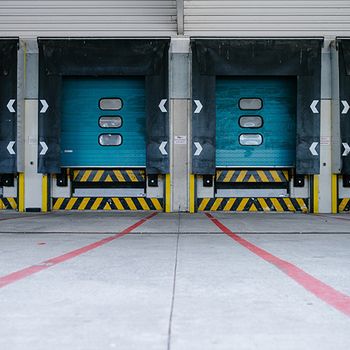How to Properly Pack a Computer for Moving
How to Properly Pack a Computer for Moving

Preparing Your Computer for Packing
Before you start packing your computer, it’s important to prepare it properly. This involves both physical preparation and data management.
Back Up Your Data: The first and most crucial step is to back up all your important data. Use an external hard drive, cloud storage, or both to ensure your files are safe. This protects against any potential data loss during the move.
Shut Down and Unplug: Power down your computer completely and unplug all cables and peripherals. This includes the power cord, keyboard, mouse, and any external devices such as printers or external hard drives.
Remove Components: For desktop computers, remove any detachable components like the monitor, printer, or external drives. If you have a laptop, take out any external devices and accessories, including USB drives and SD cards.
Label Cables and Parts: To make reassembly easier, label each cable and component. Use masking tape or cable ties to bundle cables together and write a label indicating what each cable connects to.
Clean Your Computer: Dust and debris can cause issues if trapped inside your computer. Use a can of compressed air to blow out dust from vents and fans, and gently clean the exterior with a microfiber cloth.
By preparing your computer in advance, you ensure that it’s ready for safe packing and transport.

Packing Materials and Techniques
Using the right packing materials and techniques is essential for protecting your computer during the move. Here’s how to do it:
Gather Packing Materials: You’ll need sturdy boxes, bubble wrap or foam padding, packing tape, and possibly anti-static bags for sensitive components. For laptops, you may also want a laptop-specific carrying case.
Wrap the Computer: For desktops, wrap the computer tower in bubble wrap or foam padding. Ensure it’s well-cushioned, especially around corners and edges. For laptops, place it in an anti-static bag if available, and then wrap it in bubble wrap.
Protect the Monitor: If you’re moving a monitor, wrap it in a layer of bubble wrap and place it in a box that fits snugly. For added protection, use foam inserts or additional padding to fill any gaps.
Pack Components Separately: Place each component—such as the CPU, monitor, keyboard, and mouse—in separate boxes or compartments within a larger box. Make sure each component is individually wrapped and cushioned to prevent movement.
Label Boxes Clearly: Clearly label each box with its contents and indicate that it contains delicate electronics. This will help movers handle the boxes with care and prevent any confusion during unpacking.
Proper packing helps prevent physical damage to your computer and its components, ensuring they arrive safely at your new location.

Handling and Transporting Your Computer
How you handle and transport your computer is just as important as how you pack it. Follow these guidelines to ensure its safe arrival:
Transport in an Upright Position: Always transport your computer in an upright position to avoid internal damage. Avoid laying the computer flat, especially for desktops, as this can shift internal components.
Secure the Load: If you’re using a moving truck or car, secure the boxes to prevent shifting during transport. Use straps or bungee cords to keep the boxes in place and avoid any sudden movements or impacts.
Avoid Extreme Temperatures: Computers are sensitive to temperature extremes. Avoid exposing your computer to very hot or cold conditions during the move. If you’re moving long-distance, try to keep the moving truck climate-controlled if possible.
Handle with Care: When loading and unloading the computer, handle the boxes gently. Avoid dropping or bumping them, and be careful when placing them in and out of the vehicle.
By following these handling and transport guidelines, you reduce the risk of damage during the move.

Setting Up Your Computer After the Move
Once you’ve arrived at your new location, it’s important to properly set up your computer to ensure it’s ready for use.
Inspect for Damage: Before unpacking, check the boxes for any signs of damage. If you notice any physical issues with your computer or its components, document them for insurance purposes and contact a repair professional if needed.
Unpack and Reassemble: Carefully unpack each box and remove the protective wrapping. Reconnect the cables and peripherals according to your labels. For desktops, reconnect the monitor, keyboard, mouse, and other components.
Power Up and Test: Once everything is set up, power on your computer and check that it operates correctly. Test all peripherals and ensure that the computer recognizes external devices and that there are no issues with the display or performance.
Restore Your Data: If you used an external hard drive or cloud storage for backups, restore your data to your computer. Check that all files and applications are intact and functioning properly.
Update and Maintain: After setting up, make sure your operating system and software are up to date. Perform any necessary maintenance checks to ensure optimal performance.
By carefully unpacking and setting up your computer, you ensure that it’s ready for use and that any issues are addressed promptly.

How Beacon Moving & Logistics Can Help with Your Move
When it comes to moving delicate electronics like computers, choosing the right moving company can make all the difference. At Beacon Moving & Logistics, we specialize in providing top-notch moving services tailored to the needs of your valuable equipment. Here’s why you should choose us for your computer relocation:
Expert Handling of Electronics: Our team is trained in the proper techniques for handling and packing sensitive electronics. We use industry-best practices and high-quality materials to ensure your computer is packed securely and arrives in perfect working condition.
Comprehensive Moving Services: We offer a full range of moving services, including packing, transporting, and unpacking. Whether you're moving locally or long distance, our team handles every aspect of your move, providing you with peace of mind and a stress-free experience.
Attention to Detail: We understand that every detail matters when it comes to moving high-value items like computers. Our meticulous approach ensures that all components are carefully packed, labeled, and transported with the utmost care.
Customer-Centric Approach: At Beacon Moving & Logistics, our customers come first. We provide personalized moving plans to meet your specific needs, and our friendly, professional team is always available to address your concerns and provide support throughout the moving process.
Reliability and Trust: We are committed to delivering reliable and trustworthy moving services. Our reputation for punctuality, professionalism, and exceptional service ensures that you can trust us with your valuable electronics and other belongings.
By choosing Beacon Moving & Logistics, you’re selecting a moving partner that values your electronics as much as you do. Let us handle the complexities of your computer move so you can focus on settling into your new space with ease.
Why Choose Beacon?
No matter if your move is local or long distance, Beacon Moving & Logistics is committed to making the experience stress-free and efficient. With our expertise and customer-focused approach, we’re here to ensure your move is smooth, safe, and hassle-free from start to finish. Let us take care of the details, so you can enjoy your new home with peace of mind.
Our Services
Ready to get started?
Trust us to be your reliable residential movers, providing professional moving services that exceed your expectations. Get in touch with Beacon Moving & Logistics today!




